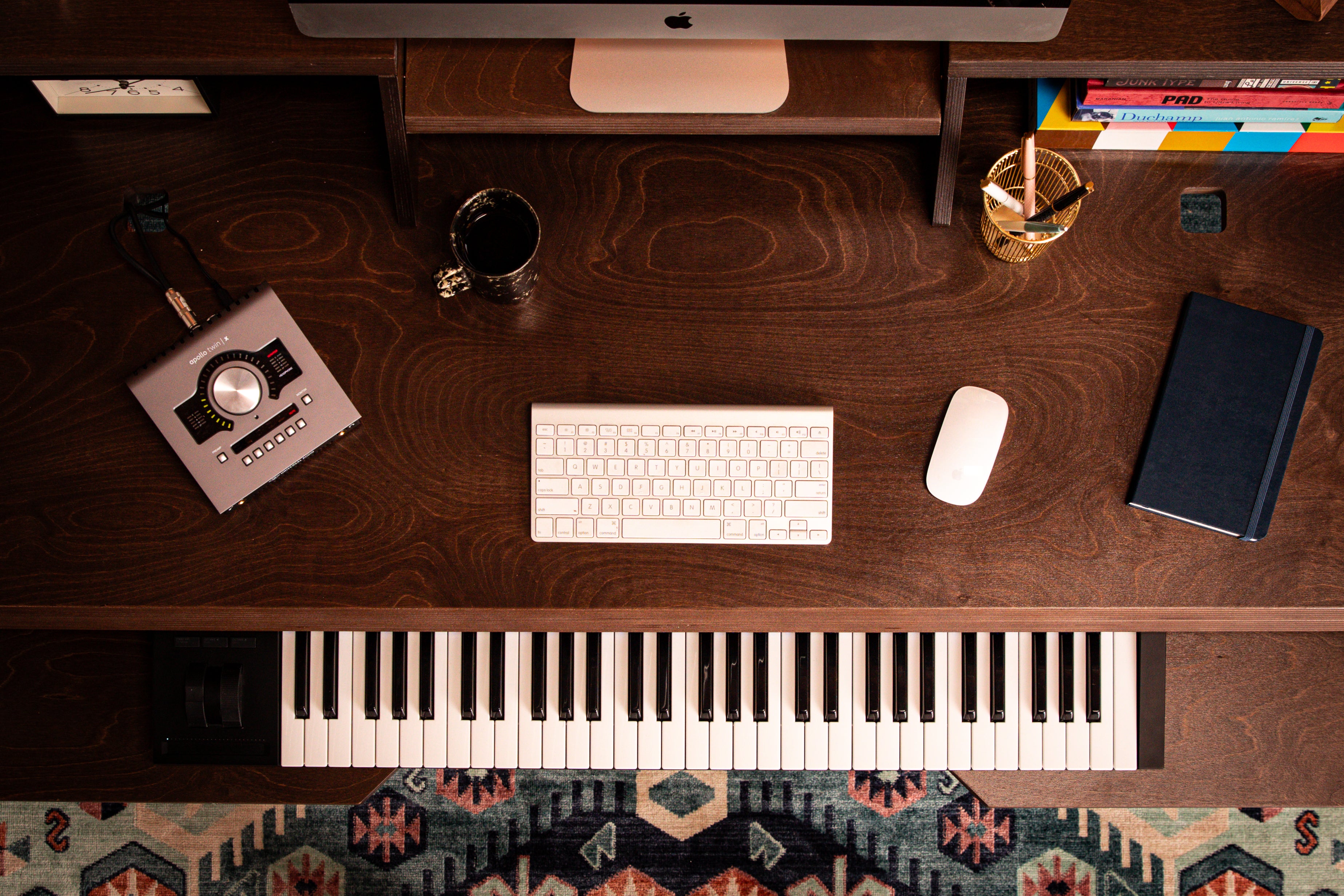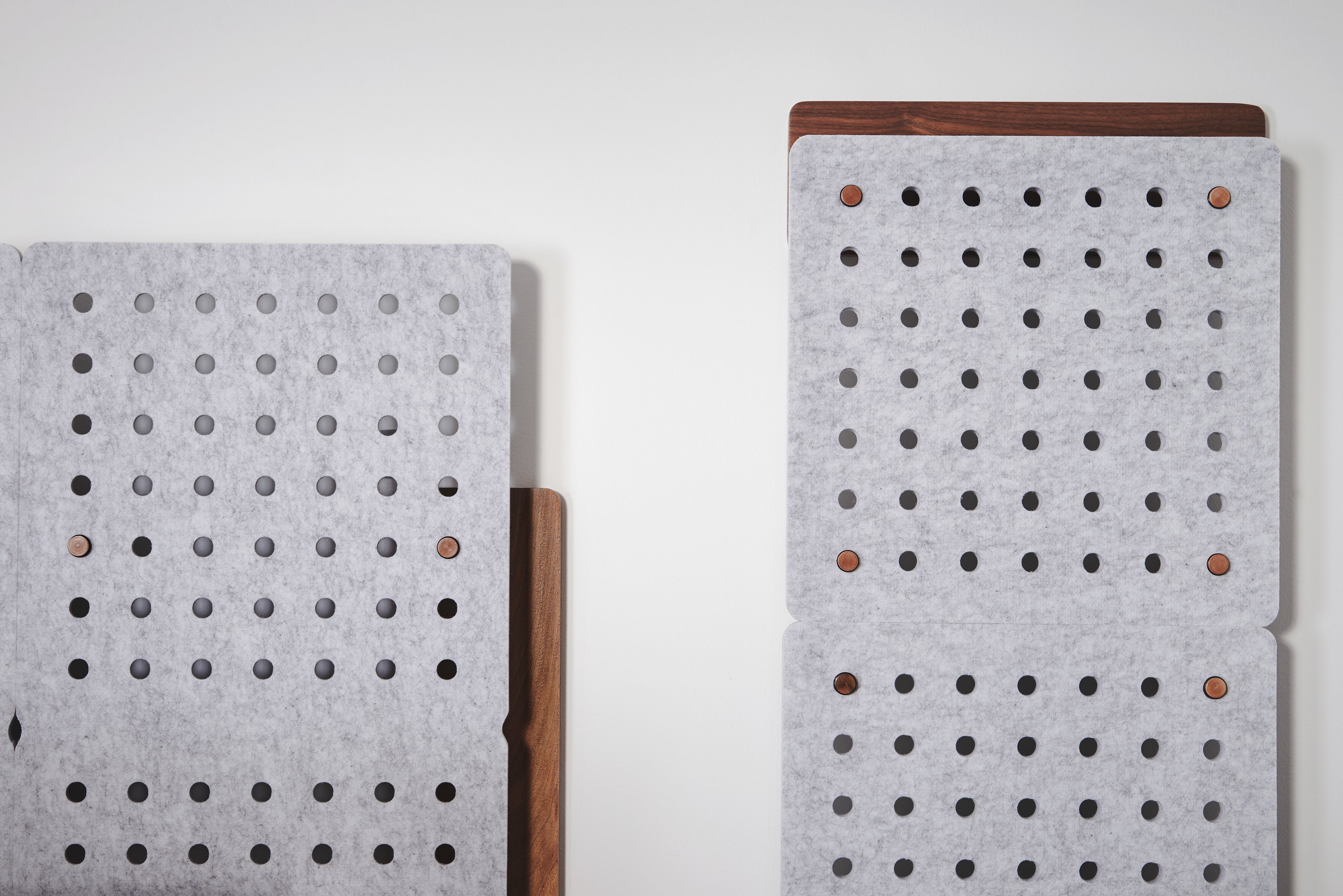Ever wonder why studio mix rooms have canvas or wood rectangles stuck to the walls? Those are acoustic panels (also known as acoustic treatment) — and if you’re an artist or producer who wants to work on music in your own space, you need to know how they work to make your room sound more balanced.
Acoustic panels are used to reduce unwanted reflections in a room to make it suitable for recording or mixing. When you clap in an empty room with bare, hard surfaces, the clap is followed by some reverb and echo. This occurs because the sound wave of your clap is bouncing off the floor, ceiling, and walls.
Larger rooms tend to have longer echoes, while reflections in a small room can often result in unpleasant, metallic-sounding smearing. These are characteristics of a “live” sounding room, which are usually not ideal for mixing. By mounting acoustic panels, you can absorb and diffuse these unwanted reflective sounds, resulting in a more “dead” sounding room.
With so many different options for acoustic panels out there, how do you know what’s right for your studio? What are the different kinds of acoustic panels and points to consider before you make a purchase?
Today, we’re walking you through De-Fi’s Eco Acoustic Panels: the Absorbers, the Bass Trap, and the Diffuser. Our suite of custom-designed, sustainable acoustic treatment solutions looks amazing — and most importantly, they’ll help your records sound great. Anyone can get better studio sound at home with the right treatment. Let’s get into it.
- What are acoustic panels?
- Why are acoustic panels important?
- What type of acoustic panels are there?
- Are acoustic panels used for soundproofing?
- Where can I buy acoustic panels?
What are acoustic panels?
Acoustic panels are a form of acoustic treatment, aka the process of making a room sound more “neutral” so that it’s better for listening to music.
Acoustic panels come in many different materials, such as foam, canvas, or fiberglass. These materials, when placed on your walls, suck up unwanted reflections and resonances to improve the natural acoustics of your space.
De-Fi’s Eco Acoustic Panels not only help your room sound great, they’re good for the environment. The hardwood mounts and recycled polyester panels used for the Absorber, Bass Trap, and Diffuser were all designed with the three R’s framework in mind as a guiding principle: reduce, reuse, and recycle.
You can treat your rooms with acoustic panels for a more reliable listening and production environment. Listening back to your music in an acoustically treated room lets you hear your music as it actually is, without the addition of the reflections. This allows you to make more accurate mix decisions, and results in music that sounds better on more systems!
Why are acoustic panels important?
To understand exactly how to fight your enemy, you must first understand it. So, to understand why acoustic treatment is important, you have to know why we need it in the first place.
Some terms to take in:
- Reflections are sounds that have bounced off of a hard surface, like a wall or ceiling.
- Early reflections are the first reflections you hear when playing a sound in a room. These are the reflections that come off walls, ceiling, and furniture in the direct bounce path.
- Standing waves are two waves of the same frequency and amplitude reflecting at each other from opposite directions. Standing waves result in noticeable, typically harsh resonance. (Not great!)
- A room mode is a resonant area of the room where certain frequencies can build up and sound louder than other frequencies. (Also not great!)
- Bass build-up is a room mode that occurs in corners where low-frequency pressure is enhanced.
The goal of acoustic treatment is not to completely eliminate reflections but to sufficiently tame them. Getting rid of early reflections and unwanted bass build-up can improve the level of mix you can achieve, even in a mediocre room.
What type of acoustic panels are there?
There are three main categories of acoustic panels:
Absorbers

Absorbers, like the name suggests, absorb sound waves, which prevents them from becoming reflections and mitigates unwanted room modes. This helps “deaden” a room.
Our Absorber can be mounted on walls or ceilings, with a unique mount design that keeps an air gap between the recycled Eco Acoustic Panel and the surface. These are going to be your major ally in taming early reflections, flutter echo and the general hollow sounding nature of the boxes that become our studios. They can clean up your sound stage, and focus the airiness of your recordings.
Absorbers come in packs of four and are fully customizable. You can order additional panels and double stack them for more absorption, or purchase double width panels that extend the area of coverage without requiring additional mounts.
Bass Traps

Bass traps are absorbers that are specifically built to trap low frequencies. They are usually found in corners, where bass build-up occurs.
Our Bass Trap is built to capture unwanted modes in corners. Did you know that a 80Hz wavelength is around 14 feet long? To prevent bass build-up, we use a sympathetic acoustic mass, loosely suspended between the corner and the panels.
Think of the sound wave as a rock, and the Bass Trap like a very heavy blanket hanging from a drying line. Throw the rock at the blanket, and the blanket will flex and absorb the energy, dropping the rock harmlessly.
Bass Traps come in packs of two and include double stack panels and a mass loaded vinyl membrane for each mount.
Diffusers

Diffusers take incoming sound waves and scatter them, instead of absorbing them. The best diffusers will redirect the sound wave in every direction, resulting in a more pleasing and natural-sounding room. (Diffusers can make your room sound bigger than it is…!)
Output’s Diffuser is made of hardwood and uses a quadratic diffuser design to evenly disperse any mid-range frequencies that hit it. It’s specially tuned to focus on 850Hz to 3400Hz, a common room mode in small rooms. You typically hang it on the wall behind you, opposite your speakers.
Are acoustic panels used for soundproofing?
Acoustic treatment and soundproofing serve different purposes. Acoustic treatment reduces the amount of reverb and echo inside a room. Soundproofing — aka sound isolation — cuts down on the amount of the sound that travels in and out of your room.
If you live in an apartment and have noisy neighbors who are loud enough to bleed into your recording, acoustic treatment will not effectively reduce that noise. For a soundproofing hack, try using weather seals and door sweeps to seal any cracks around the door to your room. This is a common leakage point for sound. (Check out a great tutorial via Hush Soundproofing here.)
Where can I buy acoustic panels?
Your local big box music store (such as Guitar Center or Sam Ash) carries items like acoustic foam squares or foam bass traps. However, reusable mounting options for these solutions — especially non-adhesive ones — are tougher to come by.
For thoughtfully designed, sustainably constructed acoustic treatment that you can spec out and assemble yourself, De-Fi’s Eco Acoustic Panels are the way to go. The Absorber, Bass Trap, and Diffuser all come in multiple colors to fit any studio environment.
Not sure about exactly what kind of treatment you need, or the number of panels your room requires? Do you want to learn more about how to use our panels to “deaden” the sound in your room? Feel free to reach out.


